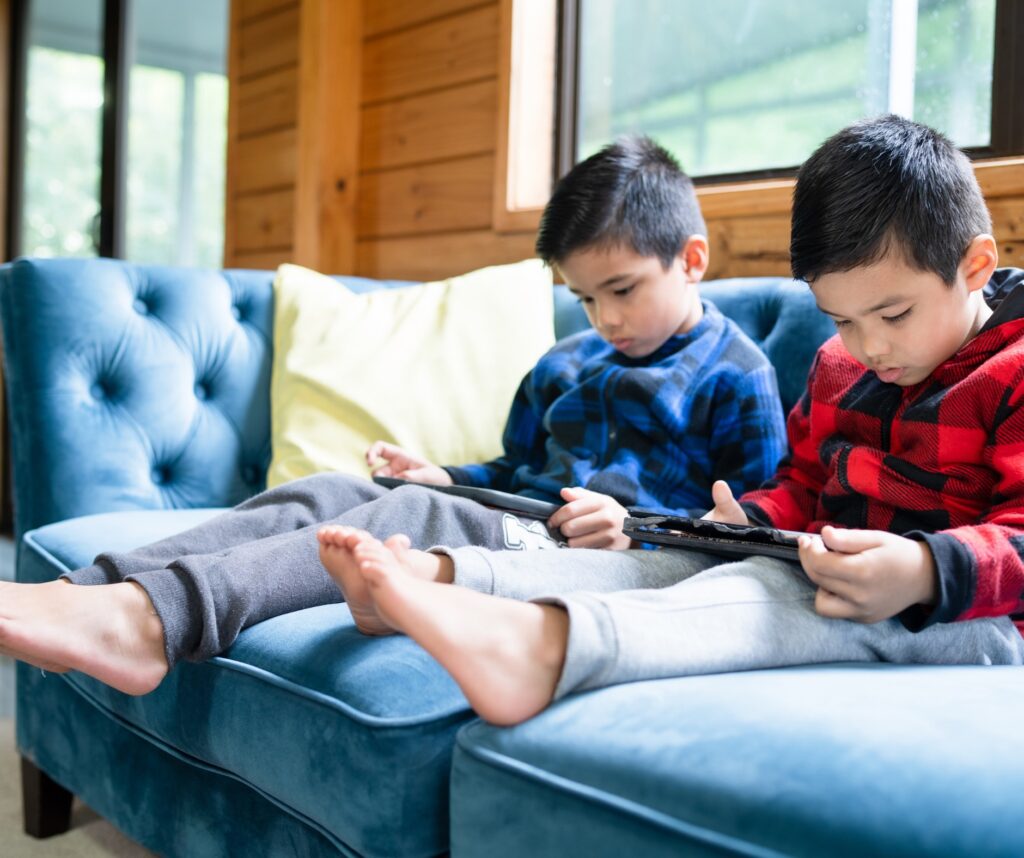So much of our world depends on screen usage. We work on screens, use them for entertainment, and now we rely on them for much of our communication. We know that some research tells us that our kids shouldn’t be watching so much. But research from the American Academy of Pediatrics also suggests that well designed and monitored interactions can improve cognitive, literacy, and social outcomes for children. With work and school and meetings and communication each coming through a screen, it’s becoming increasingly difficult to balance our screen time.
How do we guide our kids in balancing their screen time when so much of their required activities are screen-based?
Evaluate how much screen time is right for your family
The first step in any problem is to evaluate the situation. What do you need to accomplish and what do you want to accomplish while on devices. Next, let’s figure out exactly how many minutes (or hours) of screen time our kids are getting no. How much of this time is required activity and how much is optional or entertainment? As you evaluate, break it down to see what is really happening and whether or not you really have a problem.
Set Screen Time limits
Once you understand how much screen time you have to plan for, you can make the plan. Do you feel like your child’s devices are taking too much time out of their day? Talk with them about it and see if they feel the same.
While we cannot eliminate school-related screen time, we can limit optional screen time without removing it completely. We can teach our kids to balance real life activities with screen time.
Consider other activities that you both would like for them to be doing. Is there enough room in your schedule to include any physical activity, reading, hobbies, or face-to-face relationships?
Figure out together how to balance real world activities with technology based activities. Perhaps 45 minutes of physical activity must come before an equal amount of screen time. Or maybe you could alternate days, with optional screen time happening every other day and real life activity on the in-between days.
Stick to the plan
Work together to come up with a plan for when your child will have time on computers, television and personal devices. Make sure you group those activities separately from other activities. Decide on a set limit for all technology based activities and stick to it. While it will take some time to get used to limits and to make them routine, you will get there.
Monitor your kids while on Devices
If you have younger children, it’s important to be part of their computer and television viewing. It’s tempting to let the screen be a babysitter. We’ve all been there. But monitoring your little one’s screen usage allows you to evaluate it, discuss it, support their learning, and use it for more than babysitting.
This is helpful with older kids as well. While we don’t want to stare over our big kids’ shoulders while they are online, it’s still important to monitor them. Know what they are doing. Keep track of time, and teach them to keep track of the time too.
In our house, screens must be visible and in the general family area. This is one way we can monitor without hovering, teach personal responsibility with time and trust, and not lose track of how much screen time we’re getting.
Make it worthwhile
Children love to have fun, and adults like for children to learn. You can balance these perspectives in what kind of screen time you use with your kids. There are plenty of ways to waste time online, and there are plenty of silly shows. There are also many fun and educational sources of entertainment for your kids, and My Signing Time is one of them.
You can get a My Signing Time subscription with a free 14-day trial right here. Check it out and see if it’s a good fit for your family.

